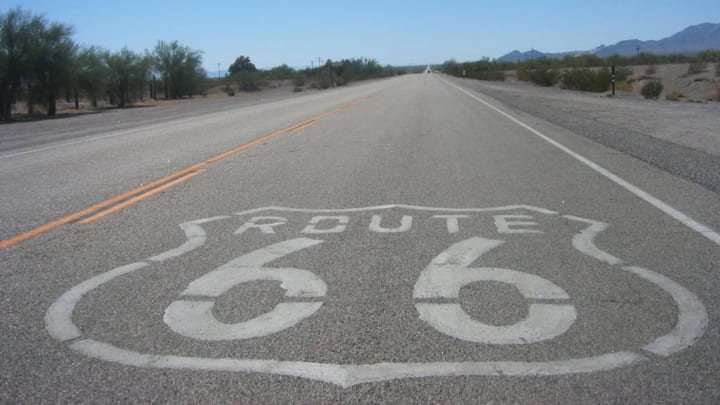Why Was Route 66 Decommissioned?

Very little inspires nostalgia for the golden age of road trips the way Route 66 does. The roadway that runs from Chicago to Los Angeles, which first opened in 1926, was clearly designed with convenience and efficiency in mind, as it connected small towns with major thoroughfares throughout its 2448-mile stretch. By the 1950s, America's "Mother Road"—with its roadside tourist traps, charming drive-ins, and kitschy hotels—had become a major tourist attraction in and of itself.
Route 66 inspired John Steinbeck's The Grapes of Wrath, was the basis for a popular television series, and supported countless small business owners who served vacationers as they passed through. So how did the beloved Main Street of America fall into a state of disrepair and disuse less than 30 years after the height of its popularity?
Three words: the Eisenhower Interstate.
During WWII, General Eisenhower saw how efficient the German Autobahn was. In 1956, President Eisenhower enacted the Federal Interstate Act, which called for the construction of four-lane highways to make crossing the U.S. more efficient, eliminate traffic congestion, and make it easier to evacuate big cities in the event of a nuclear attack.
Unfortunately for Route 66 and the people who depended on it, the Federal Interstate Act meant that parts of the Mother Road had to be upgraded, replaced, or bypassed entirely. By the 1970s, the original route had been almost entirely chopped up; on June 27, 1985, the all-American roadway was decommissioned.
Much of the actual Route still remains—85 percent, in fact. The famous Wigwam Motel and other attractions still stand, helped in part by the Route 66 Corridor Preservation Program, which was launched in 1999. You may see more of the route being revitalized in the coming years, too. In 2015, several preservation organizations combined to form the U.S. 66 Highway Association, an organization dedicated to preserving the roadway and all of its architecture, historic sites, and attractions.
Perhaps by its 2026 centennial, the Mother Road will once again serve millions of Americans headed west for adventure.
Have you got a Big Question you'd like us to answer? If so, let us know by emailing us at bigquestions@mentalfloss.com.